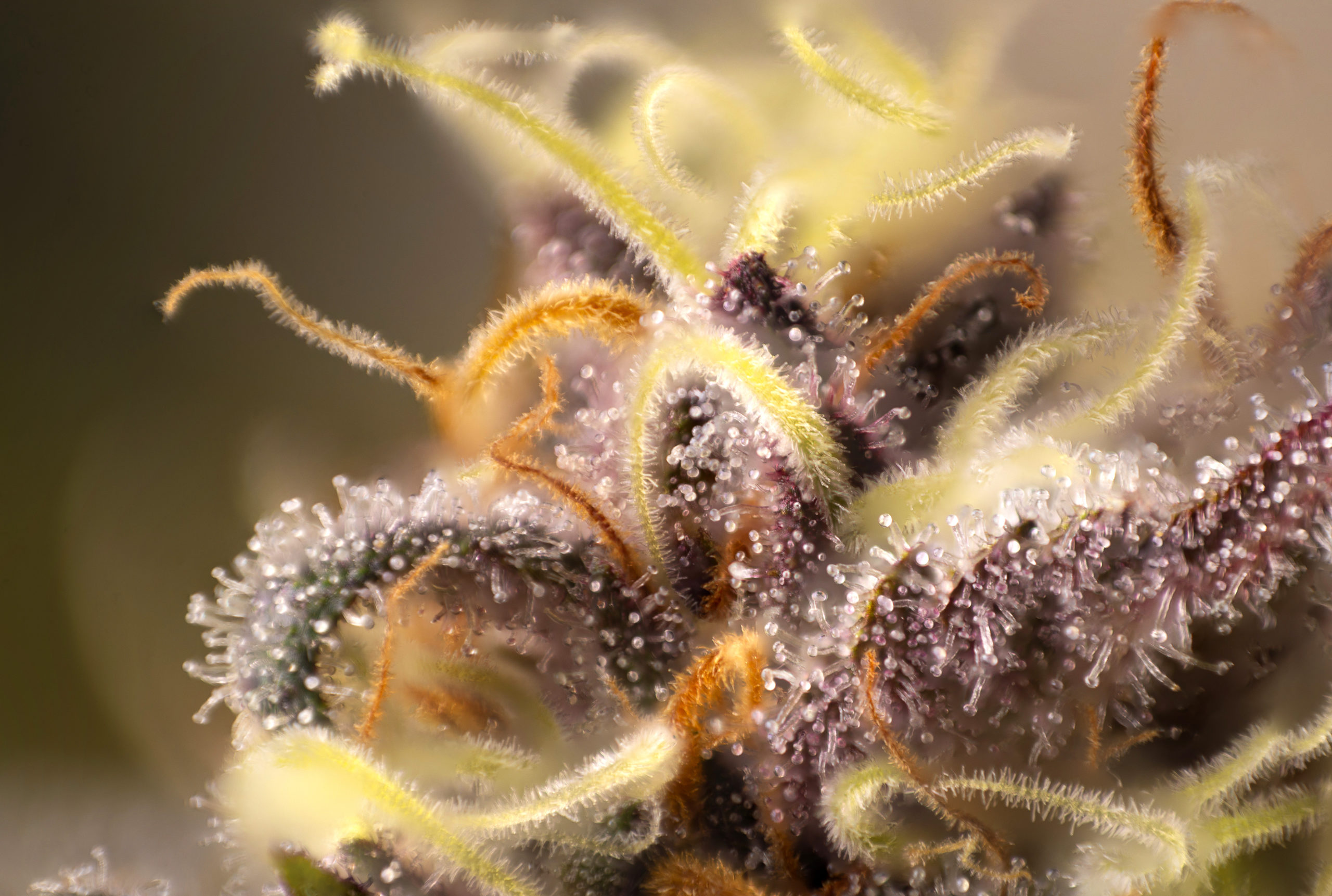The surface of a cannabis plant is covered with different cannabis trichome types that vary in their form and function.
Trichomes are tiny, hair-like outgrowths that cover cannabis and hemp flowers. They make the cannabis flower look like it has been dusted in sugar or sand, and they produce the valuable terpenes and cannabinoids like THC and CBD, that drive cannabis and hemp markets.
Most of us have seen the oil-rich trichome of a cannabis or hemp plant. It’s the sought-after “fruit” of the cannabis or hemp plant that drives the industry.
Cannabis cultivators and hash makers need to understand the differences between the different types of trichomes because they impact the potency, flavor, and effects of the final product, as well as overall yield.

The Three Main Types of Cannabis Trichomes
Three glandular trichomes — bulbous, capitate sessile, and capitate-stalked — play important roles in the development of the cannabis plant.
Let’s talk about them in order of smallest to largest sizes, and on average, from least abundant to most abundant on a cannabis plant.
Bulbous Trichomes (10-30 micrometers, least abundant)
Invisible to the naked eye, bulbous types of trichomes are tiny mushroom- or lightbulb-shaped outgrowths found on the epidermis of the cannabis plant. They produce very little to no cannabinoids, so they’re not too helpful for determining harvest readiness.
Capitate-Sessile Trichomes (25-100 micrometers)
Capitate-sessile types of trichomes, found on the stems, leaves, and bracts of cannabis plants, are also too tiny to view without a microscope. They have a globular-shaped head attached directly to the plant’s epidermis and do not produce cannabinoids to any great degree.
Capitate-Stalked Trichomes (50-500 micrometers, most abundant)
The highly-sought-after Capitate-Stalked trichomes are easily recognizable as the iconic oil-rich cannabis or hemp trichome.
Capitate-Stalked trichomes are visible without the aid of a microscope and are much taller than bulbous and capitate-sessile cannabis trichome types. They look like tiny antennae with circular globes capping off the end of their stalks.
During the flowering stages of cannabis, Capitate-Stalked trichomes increase in density and produce the highest quantity of desirable cannabinoids and terpenes.
You know cannabis plants have reached peak maturity and are ready to harvest when capitate-stalked trichomes start to darken, turning from clear to opaque and then to amber.
Even though the capitate-stalked trichomes are one of the most desirable parts of a cannabis plant, a smart cannabinoid extractor will try to use as much of their biomass as possible and will therefore not overlook the Bulbous trichomes and Capitate-Sessile trichomes as a source of cannabinoids.
Non-Glandular Types of Cannabis Trichomes
Non-glandular cannabis trichome types play an important role in the defense of the plant from harmful environmental factors. These trichomes do not have a glandular head. Rather, they are hair-like extensions, either unicellular or multicellular, that resemble leaf hairs with pointed tips.
Non-glandular trichomes do not produce or store active chemical compounds, but they do protect plants from biotic and abiotic stresses. They form a type of structural barrier to protect by barring access to insects, preventing disease attacks, shielding from UV-radiation, reducing transpiration, and more.